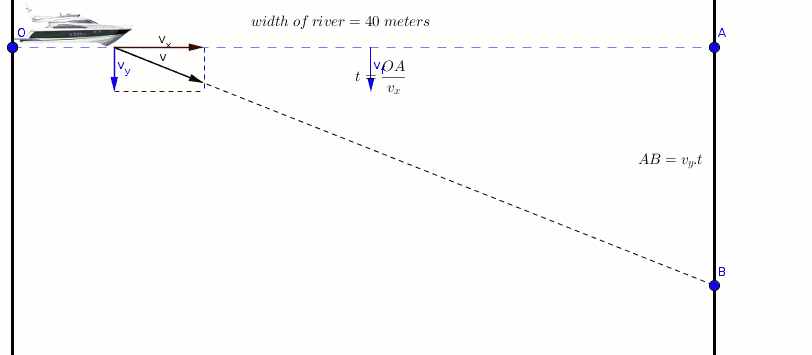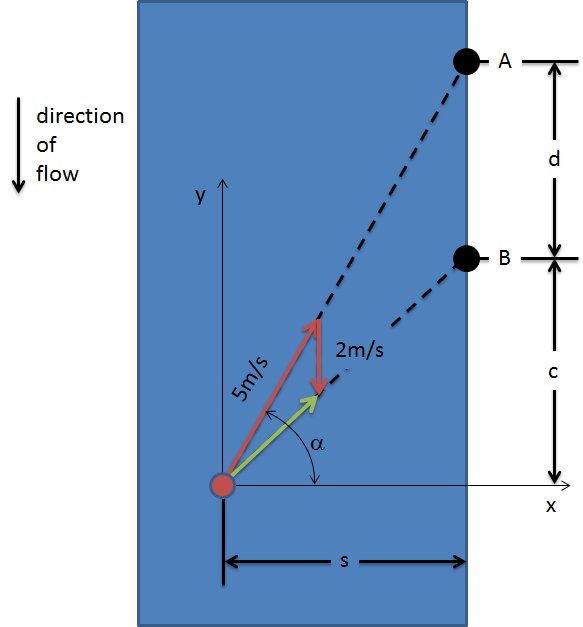Question #3fc43
2 Answers
Explanation:

The time is
Explanation:
Sometimes, when we get a question like this, we don't have all of the information that is needed. In that case, we can put a place-holder (variable) in for that information and proceed with a solution. In this case, a diagram helps us decide what we have and what we need:

We are looking for the distance between points
We also know that the river is moving at
Finally, we need to know the distance to the shore, let's call this
The x-velocity of the boat is simply:
We can calculate the time to get to shore from this and the distance to shore as:
The y-velocity of the boat is given by:
From this and the time we can get the distance traveled upstream as
If the river wasn't moving, the boat would have reached point
We can now subtract
which simplifies to


